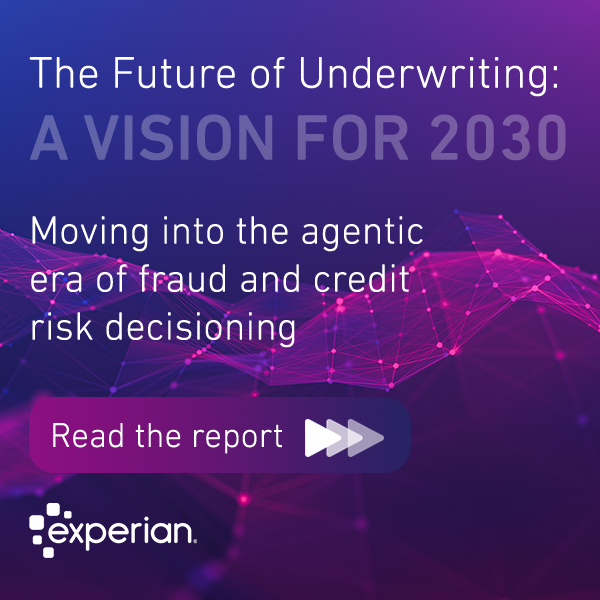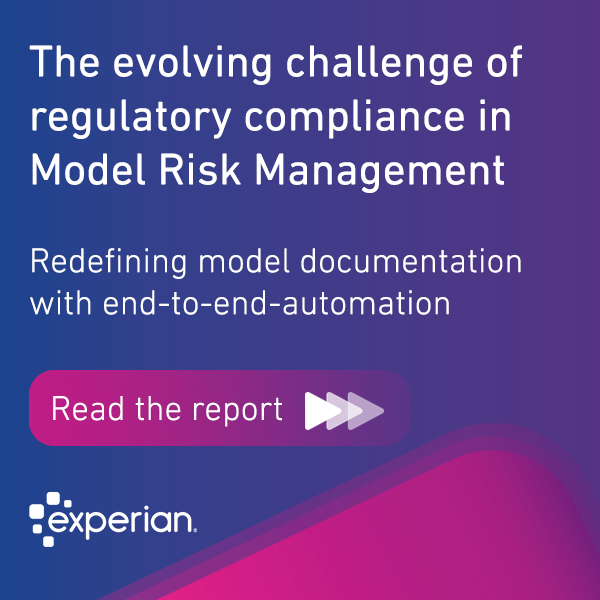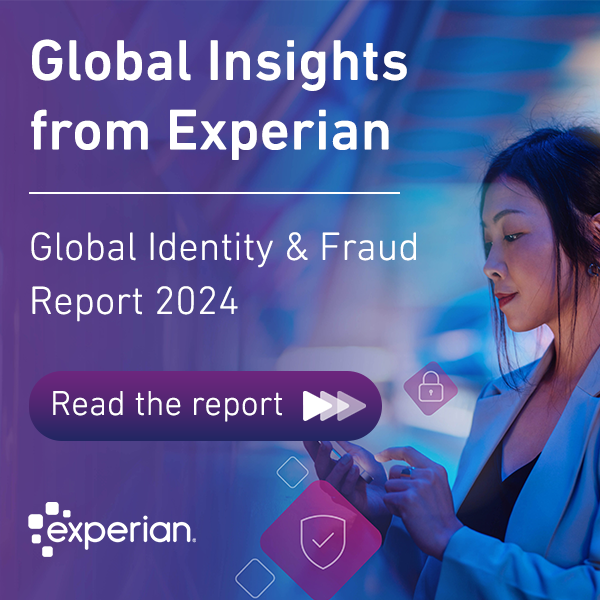All posts by Managing Editor, Experian Software Solutions
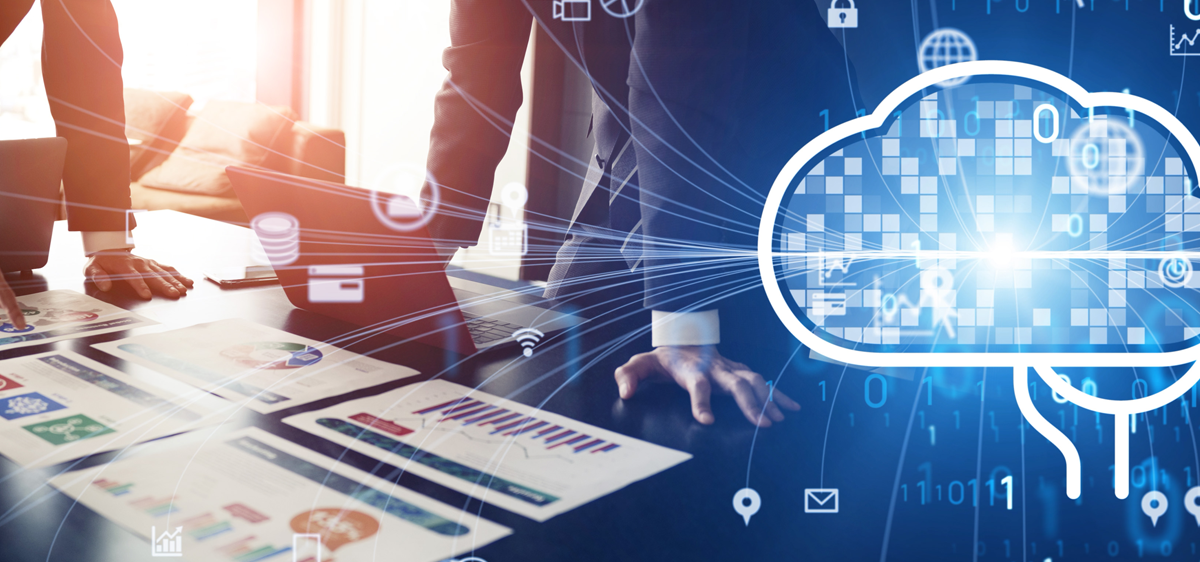
Shri Santhanam, EVP and Global Head of Analytics and AI, talks to Ganesh Padmanabhan from Stories in AI about why he hopes the changing world of lending will lead to better financial inclusion. "The whole digital revolution in lending means that financial institutions are scrambling to make the process much more seamless, reduce time for approvals, let consumers have access to different financial products, and have innovative products like buy now pay later. But underneath it all, you have to get more nuanced and more sophisticated about the methodologies that you use for lending. And this is where AI and ML come in." Expect to hear discussions about the future of finance, how to drive impact by leveraging data analytics and AI, frameworks for setting up and institutionalizing an AI center of competence for a large organization, and how to scale data science efforts through hiring, promoting from within, and setting up the right structure and processes to make it happen. "Experian for over 100 years now has leveraged the power of data. We’ve been a very powerful data company. We’ve used that data to improve the lives of consumers and improve how businesses make decisions. Fundamentally, we’ve had a set of pioneers who before Big Data tech was introduced to the world, figured out that having a data marketplace or collecting high quality data on consumer lending will be of value, and that’s been the core of our business. That dynamic is changing. We see a lot of value migrating what we call up the stack. So from purely data to actually the decisions that are made with the data, to products and services in the data." Related content

In this episode of Insights in Action, as part of our Women Making Waves in Technology special series, Pamela Stephens, Sr. Product Manager for Global Identity & Fraud at Experian walks us through her role in product management and shares some practical career advice for women in tech. The podcast explores what it takes to drive change and innovation within a shifting fraud and identity landscape, looking at the importance of connecting with teams, laser-focussed priorities, customer-centricity and how diversity and inclusion initiatives are central to supporting women in tech. "I am a relentless customer advocate. I spend most of my days focussing on solving the most urgent problems for our clients across the Identity and Fraud landscape through our technology." Top 3 tips for remote working Being authentic is how we connect, so working remotely makes this challeneging. Schedule quick 15-minute catch-ups with colleagues - and not necessarily about work. The more you know someone, the better you work with them. Burnout is real, setting boundaries for work versus life is challenging when you're in an office, never mind when at home. Schedule breaks and proritize self-care. Stay laser-focussed and organized with your calendar - be intentional with how you schedule your calendar and ensure it aligns with priorities most important for the business and you personally Discover other stories from the Women Making Waves in Tech podcast series Access all episodes of Insights in Action on Soundcloud, Spotify, Google Podcasts

Credit providers have long relied on data to lend insights into how their customers are faring—and help predict what's to come. The pandemic, however, introduced unexpected anomalies that have made understanding the actual credit landscape far more challenging. For example, while government assistance programs have enabled customers to stay up-to-date on their payments, they've also made it harder to discern the true financial impacts of the crisis. Our recent research gives voice to these challenges. We surveyed businesses around the world three times from July 2020 through January 2021 for our annual Global Decisioning Report. The results reveal that business confidence in credit risk analytics models has declined over the pandemic, dropping by nine percentage points for Tier 1 lenders, and 15 percentage points for Tier 3 lenders. As we look ahead, credit providers need ways to improve confidence in their analytics models so that that they can make smarter, faster decisions on behalf of their customers and businesses. This is where synthetic and alternative data are beginning to make a real difference. The rise of AI and machine learning solutions has opened the door for lenders to leverage this data. Understanding how to put it to use—and why it's imperative to do so—will help lenders navigate the end of this crisis and prepare them for any economic volatility in the future. The data differentiator Before we dive into how lenders can best utilize alternative and synthetic data, let's quickly define what we're discussing. Credit providers have traditionally used credit bureau data to assess their portfolio risk and inform credit decisions. But as noted, in times of crisis, supplementing that data with additional context can significantly improve its effectiveness. Alternative data does just that. Alternative data refers to primarily unstructured data from non-traditional sources. For example, social media data can help paint a more complete picture of customer behavior. And location data can provide information about customer geography, such as opportunities for travel-related purchases. Synthetic data complements alternative data but is not the same. Synthetic data is new data created by altering existing data. So a lender might change the profile of its customer base and then use that dataset in analytics models to better understand what the future may hold. Both types of data work together, with alternative data providing a more complete customer view and synthetic data allowing lenders to account for additional variables and offset their risk accordingly. New data in action Confidence in analytics models may have dropped during the crisis. But lenders aren't resting on their laurels. Instead, nearly half of businesses report that they are dedicating resources to enhance their analytics efforts. Those that include alternative and synthetic data in their improved models have the opportunity to leverage the information in multiple ways. Some of the most exciting applications of alternative and synthetic data include: Anticipating purchasing behavior New data sources, especially from social media, help lenders understand what's happening in their customers' lives and how that may translate into purchases. For example, a customer who has recently moved into a new home may be considering purchasing furniture or home décor. Or customers who are celebrating life milestones such as birthdays or graduations may be buying gifts or spending on events. Predicting credit risk In this realm, synthetic data can be beneficial. Lenders can use synthetic data to understand how credit profiles may change in specific circumstances, such as modeling a higher unemployment rate or dramatic income shifts. They can then use analytics models to determine the related impact on customer affordability. Improving fraud detection With an improved customer view, fraud prevention teams can more easily identify unusual patterns in customer behavior and spending. For instance, does a customer's current location (per location data) match their most recent transactions? Or has the number of contacts on their phone dramatically changed (it may not be their phone)? Enhancing pricing Both types of data are useful in improving pricing models across company portfolios and at a personal level. The additional context can help everyone from lenders to insurers to banks assess customer needs and provide products that meet them—at prices that make sense. What's more, machine learning automates that pricing, allowing companies to scale personalization across the organization. Improving marketing In the same vein, new sources of data can also give marketing efforts a boost. The ability to access more real-time information about customer behaviors uncovers opportunities to provide them with credit, insurance, and other lending products that may prove immediately helpful. Data can also help identify new markets entirely or highlight rising needs that may demand the development of additional products or services. The past year was an anomaly in so many ways. However, as we ease out of the crisis, financial service companies have the opportunity to strengthen their data models—and leverage new types of data to reduce their risk and provide improved decisioning no matter what the future holds.

Donna DePasquale, EVP and General Manager of Global Decisioning Software at Experian, talks to Experian’s Insights in Action Podcast about the different ways businesses of all sizes can navigate a new era of credit risk decisioning, always with a view to assisting consumers with their credit needs when they need it most. Based on the latest Global Decisioning Report, Donna discusses the four key areas of focus that have come out of the findings: • The pandemic has not impacted everyone in the same way. 1 in 3 consumers say they are still concerned about their finances, while others are ready to start spending again. • Accelerating the movement to online credit and banking. 50% of consumers said they applied for credit online, up from 33% at the start of the pandemic. • The shift increased in investment businesses are making in advanced analytics. • Importance of delivering fast, safe, efficient, and high-quality credit experiences. How we define decisioning “To make decisioning real, it’s really about the experience that someone goes through when they’re applying for credit. When they’re managing their existing accounts and maybe asking for a credit line increase. And it’s the whole experience from providing the information to getting that answer back and then getting that outcome back. From a consumer perspective we want that to be fast and easy and simple, and also from a lenders' perspective you want a comprehensive set of information and rules that allow you to make the right decision for the business and for your consumers.” Donna DePasquale, EVP and General Manager of Global Decisioning Software

Did you miss these June business headlines? We’ve compiled the top global news stories that you need to stay in-the-know on the latest hot topics and insights from our experts. Fintech Interview with Executive Vice President, Experian – Eric Haller FinTech Buzz talks to Eric Haller, VP & General Manager, Identity, Fraud & DataLabs, about various key trends and challenges in the Digital Identification domain and how fintech prevents fraud in the financial market. Experian on Fraud: 2020 Was a Big Year for Nefarious Actors and Illicit Activity in Financial Services David Britton, VP, Industry Solutions, Global ID and Fraud at Experian, recently shared with Crowdfund Insider Experian’s insight into fraud and what the business is doing to combat nefarious activity in financial services. Evolution of digital identity Professional Security Magazine Online talks to David Britton, VP of Industry Solutions, about how the preference for digital-first was sparked and then accelerated through the Covid-19 pandemic, but the concept of digital identity and the need for its evolution will remain prevalent for both consumers and businesses way beyond that. Preventing fraud without compromising the customer experience Finextra looks at Experian's Global Identity and Fraud Report 2021 to uncover why customer experience is central to the approach for businesses when balancing fraud prevention and revenue. Three things lenders need to do to navigate today’s complex lending and credit landscape Business Information Industry Association covers Experian's Global Decisioning Report 2021 highlighting the dual-lane economy and what lenders can do to succeed in this complex and changing landscape. Stay in the know with our latest insights:

Digital payments have grown rapidly over the last year. Even before the pandemic, people were adopting digital payments. Now, after efforts from governments around the world to enforce social distancing, we've seen huge growth in this type of payment as consumers move away from in-person and contact payments. Juniper Research has released its Online Payment Fraud Report 2021 exploring why the increase in digital payments has created expansive opportunity for new methods of fraud.

Donna DePasquale, EVP, Global Decisioning Software, talks to Bloomberg Quicktakes about the key findings of the latest Global Decisioning Report. Some key takeaways from the interview: Covid-19 has created an even wider two-lane economy 1 in 3 consumers remain concerned about their finances Lenders need to prepare for a wave of potential delinquencies Around 50% of lenders are investing in model recalibration to deal with the changes caused by the pandemic One third of lenders are creating new credit models We surveyed 9,000 consumers and 2,700 businesses across ten countries worldwide. Download the Global Decisioning Report 2021:

As we enter the beginning of the end of this global crisis, the role of data, analytics, and credit risk decisioning takes on even greater significance than before. Consumers face uneven roads to recovery, with some ready to spend again and others still mired in pandemic-related financial stress. And businesses of all sizes report their operations are recovering but there’s still a way to go. A key difference we saw is that companies that adapted to serve customer needs digitally are faring much better. Our 2021 Global Decisioning eBook, Navigating a new era of credit risk decisioning, looks at how consumers are stabilizing their finances and how businesses are returning to growth. A recent survey among 9,000 consumers and 2,700 businesses across ten countries worldwide reveals the importance of lenders prioritizing digital transformation, and the role of advanced data and analytics in enhancing the customer experience. The pandemic fall-out is impacting everyone differently: 1 in 3 consumers remains concerned about their finances – paying bills and managing credit Whereas high-income households are no longer reducing their discretionary spending Navigating this varied credit landscape requires a deep understanding of customer needs on both ends of the spectrum. However, business confidence in the consumer credit risk management analytics models dropped over the past year from 71 percent to 61 percent. Smaller lenders with revenues ranging from $10M to $49M have seen the sharpest decline from 72 percent to 57 percent in the past six months. Adapting data and analytics to a rapidly changing customer base: Almost 50% of businesses surveyed said their dedicate more resources to enhance analytics One-third of businesses are planning to re-build their models from scratch Recalibrating credit models is one thing, but lenders also need to rethink their data sources to better understand current customer profiles. The data inputs generated by the pandemic have impacted credit risk models and machine learning applications in unexpected ways. For example, widespread payment holidays and government stimulus programs may be masking customers’ true financial circumstances. According to Recovery Insights, a separate study published by Experian North America: Delinquency prior to the pandemic is a strong indicator of future risk. Accounts exiting an accommodation period are 2x more likely to become delinquent than are accounts that never received an accommodation. Payment on debt during accommodation indicated a reduced risk for subsequent delinquency. Amidst the pandemic lockdown, consumers turned online to manage finances and connect with lenders – including older consumers. And while the pandemic pushed consumers online out of necessity, now that they’re there – it’s become a preference – as overall digital gains are holding above pre-pandemic levels. Lenders have a new digital imperative to meet consumers’ evolving needs for continued digital engagement. Consumer expectations of digital experiences 55% of consumers have higher expectations of their digital experience since Covid-19 began 43% of consumers surveyed age 70+ reported digital banking throughout the pandemic 14% of consumers surveyed age 60-69 applied for a new loan or card online The importance of a digital-first approach has revealed itself and many companies have put a digital customer journey in place since Covid-19 began. The future, however, is more than providing online services. It’s about knowing your customers well enough to anticipate their credit needs and using tools to automate the process and reduce risk. Adapt or lose customers 9 in 10 businesses have a digital customer journey in place 1 in 4 consumers have taken their business elsewhere because a company didn’t adapt to their digital needs Online customer experience and credit risk management are more connected than ever before. And, businesses need technology that supports the entire customer journey, from onboarding to customer management to collections. Five digital investments businesses are prioritizing the new era of credit risk management: Implement new machine learning models for customer decisions Increase digital acquisitions and engagement Understand their customer base (affordability, value, behavior) Automate customer decisions Increase value of existing customers Access the report here to get more consumer trends and find out what the future of decisioning means for businesses looking to return to growth. Stay in the know with our latest insights:
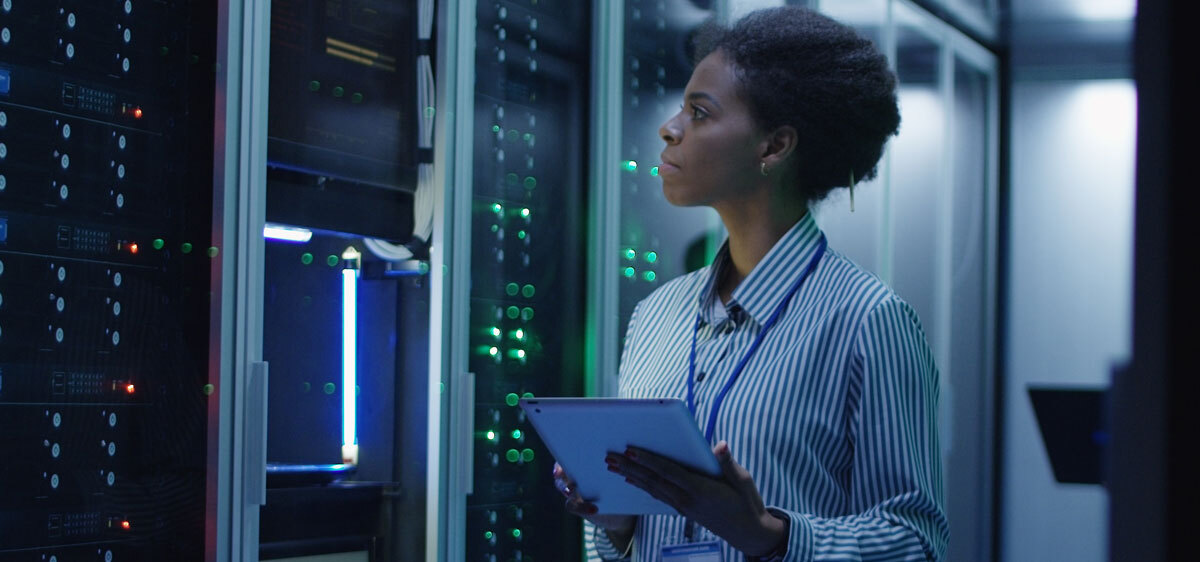
In this episode of Insights in Action special podcast series “Women Making Waves in Tech”, I had the chance to talk to Marika Vilen, Global SVP of Partnerships and CrossCore Platform Commercialization for the Experian Identity & Fraud business, about the importance of collaboration to drive innovation forward and shares her learnings on how to be and remain truly connected to clients, colleagues, and partners in today’s digital-first world. This 20-minute conversation offers some key learnings on the importance of collaboration for personal, professional, and business growth. Reflecting upon everything that has changed over the past year, Marika shared some of her key learnings from managing a growing partners ecosystem in a virtual, ever-changing environment. “We are experimenting this sort of continuum between our personal and professional lives. Somehow, it's become easier to share who you really, as since we are all working from home, the barriers between professional and personal lives are down; mixing that persona that you’re at home versus the one you’re at work. And I think this is a positive development. Especially, I think it can be very positive for women.” Innovation is often the byproduct of people collaborating and working together Over the course of 20 minutes, the conversation moved from how innovation is cultivated in different ways, drawn from collaboration, driven by different people and by those people working together, to the advantages of partnerships to accelerate business growth and transformation. “Working in a partner function within the organisation, you have a great opportunity to bring in an outside perspective at much quicker pace, because you’re introducing something that someone else has already done. You can bring along a smaller company, add their input to your product development and together create and provide something new, exciting for your customers.” For Marika, it is key to realize that “the projects that you work on to drive innovation and push the boundaries of what you think is possible are often a byproduct of people working together.” Discover other stories from the Women Making Waves in Tech podcast series Access all episodes of Insights in Action on Soundcloud, Spotify, Google Podcasts

Did you miss these May business headlines? We’ve compiled the top global news stories that you need to stay in-the-know on the latest hot topics and insights from our experts. APAC businesses focus more on revenue generation than fraud prevention Disruptive Asia looks at the latest Experian research uncovering how businesses across the Asia Pacific (APAC) region are deprioritizing security and fraud prevention. The survey found that nearly one-third favor an emphasis on revenue generation, an approach that could increase the risk of an already vulnerable digital ecosystem for consumers across the region. How sophisticated security methods can help in the battle against online fraud The National Cyber Security Centre (NCSC) has removed more scams in the last 12-months than in the previous three years combined. Finextra looks at how consumer insights from Experian's latest research uncover priorities around online security. Experian, Temenos Offer Instant Prescreen, Credit Solutions Pymnts.com reports that Experian and major banking software player Temenos have integrated their offerings to create a seamless way for lenders to extend credit. The arrangement relies on what Experian calls a “prequalification” process. eSPEAKS with Chris Preimesberger and David Britton eWeeks, Chris Preimesberger interviews David Britton, the VP of Industry Solutions at Experian. They discuss the new Experian report and study, the future of biometrics, and security trends. Experian Showcases Innovation Using Artificial Intelligence AIthority covers Experian’s best-in-class digital credit risk decisioning solutions have garnered industry-wide recognition, winning two recent awards focused on application excellence in artificial intelligence. Stay in the know with our latest insights:

The pandemic has enabled something close to a digital revolution, but how can businesses keep up with shifting consumer behaviors while ensuring fraud prevention is top of mind? Our latest Global Identity and Fraud Report takes a look at key consumer trends online and how businesses are responding.

In a recent DataTalk interview, I had the chance to reflect on and discuss how we define digital identity these days. The big digital shift we have been immersed in since the coronavirus pandemic started has certainly changed the way we create, relate to, and protect our identities online. One of the most interesting aspects of this change is that the majority of people don't think about how they're being represented online; there's a lot of information that represents us that we don't typically take ownership over. We don't tend to think about that, but it's absolutely vital to the whole process. In this regard, this year’s Global Identity & Fraud Report shows that 8 in 10 businesses now have a customer recognition strategy in place, up 26% since the start of the pandemic. Many companies also developed digital strategies as they strove to improve their online experience and provide security and fraud prevention measures when customers needed it most. That certainly marks an inflection point, as for 55% of consumers globally, security is the most important element of their online experiences. Covid-19 has changed the definition of digital identity The covid-19 pandemic has impacted the way people rely on technology for their day-to-day interactions, from shopping to banking to digital identification. It’s particularly interesting seeing how for people that weren't really engaged online before, that weren't big believers in the whole idea of buying goods and services online, the risk of walking into a store during the pandemic outweighed their fears of shopping online. That translated into about 20% of the population moving their shopping online in the last twelve months, per Experian’s 2021 Global Identity & Fraud Report. Looking ahead, the expectation is that 46% of consumers worldwide purchase and do more things online, even when physical stores and venues are safe to go back in again, meaning that people’s digital footprint is growing faster than ever. In this context, we could define digital identity as how we represent ourselves in a digital environment and how do people recognize us. For example, in the same way that years ago a good way to identify someone was looking up that person’s address and phone number, as landlines become a thing of the past, it’s possible to validate someone’s identity online using data gathered from mobile phones. The majority of people wouldn’t share those with anyone else, so their mobile phone becomes a really strong representation of their identity in the digital world. Today, opening our mobile phones with our thumbprint or via facial recognition feels very normal (that’s already part of our digital identity). Something similar happens with voice biometrics, IP addresses and device information, sources for identity data that are gaining prevalence in the digital-first world. All this identity data that is generated in the background starts to add up and creates uniqueness, helping people get recognized digitally. Related Content The race to Digital Identification, a DataTalk with Eric Haller What is digital identity and why should we care What are consumers the most concerned about when it comes to digital iterations

